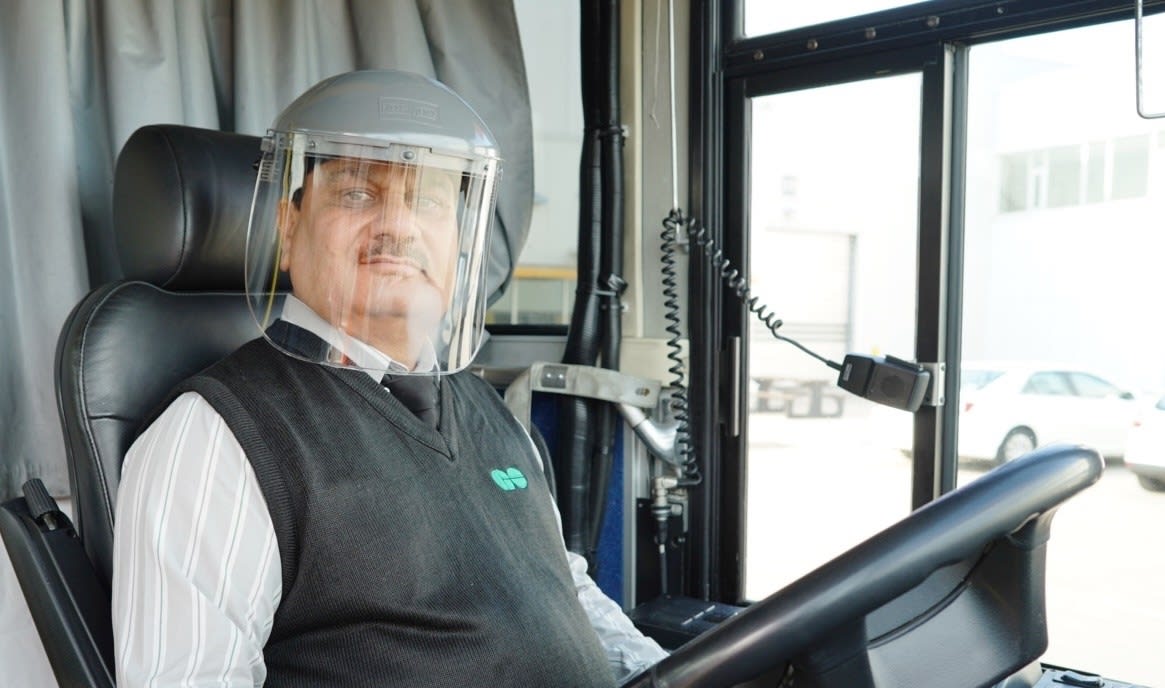Business continuity and the COVID-19 pandemic
How Metrolinx managed to make plans even before COVID-19 locked most people down.
May 29, 2020
It’s a question asked of almost everyone, every day: “How are you coping?”
The COVID-19 pandemic has most people evaluating and assessing reactions – and actions – to the greatest health threat in generations. That assessment process has led many in the business community to look to how others have managed – and to learn from those who responded early and quickly.
A GO bus driver wears a protective face covering in this file photo. (Metrolinx photo)
Metrolinx has a strong culture of business continuity planning. Preparing for the worst and having a Plan B is a year-round, and dedicated organizational effort. People throughout Metrolinx have – before the pandemic – worked on sophisticated stress-tested scenario-based exercises, without knowing when they will be needed.
This year, Metrolinx was ahead of the curve in quickly adapting to the challenges of COVID-19.
Work that Metrolinx has done to continue providing essential transit service during the ongoing pandemic is being shared around the globe through the Business Continuity Institute (BCI) website. (Frame-grab from Thebci.org)
Metrolinx’s work to keep GO trains and buses running safely has received global recognition from the Business Continuity Institute (BCI), a UK-based professional organization with more than 9,100 members in 100 countries.
It’s a network of disaster preparedness and business recovery experts – a who’s who of those who plan for the very worst.
Among a few of the ways Metrolinx reacted before health officials asked everyone to shelter in place:
- Metrolinx’s Business Continuity Office (BCO) was set up to make sure all parts of the organization have contingency plans that are regularly reviewed, maintained and stress-tested.
- Business continuity responsibility is dispersed through the whole organization.
- The BCO started sending out COVID-19 alerts and information in January, to ensure that people in all areas of Metrolinx were prepared.
- Metrolinx’s Incident Command Team was reacting to the mounting crisis as early as January 24.
There were other ways Metrolinx proactively prepared for the COVID-19 lock-down – and is still responding.
Click here to read the Metrolinx article on the BCI website.
The learning continues. But sharing the lessons found in the early days of COVID-19 – and even before – may offer business leaders ways to navigate today and tomorrow.
by Mike Winterburn Metrolinx communications senior advisor
